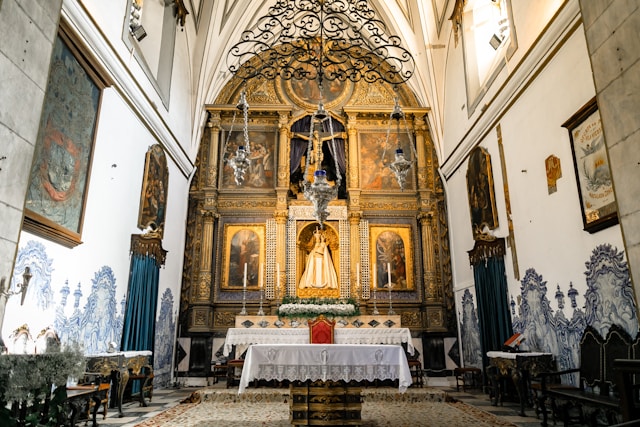Your cart is currently empty!
Discover the Historical and Spiritual Significance of the Church of the Assumption**

**
**
Introduction**
The Church of the Assumption, located in various parts of the world, holds a profound historical and spiritual significance. This majestic edifice has witnessed centuries of faith, devotion, and architectural brilliance. In this comprehensive guide, we delve into the rich tapestry of the Church of the Assumption, exploring its history, architectural features, and the spiritual impact it has had on generations of believers.
**
Historical Origins**
The origins of the Church of the Assumption can be traced back to the early days of Christianity. The belief in the bodily ascension of Mary, the mother of Jesus, into heaven became widespread in the 4th century. As a testament to this belief, churches dedicated to the Assumption began to emerge throughout the Byzantine Empire and later in Western Europe.
**
Architectural Splendor**
The Church of the Assumption showcases a diverse array of architectural styles, reflecting the different eras in which it was built. From the grand Byzantine basilicas of the early centuries to the Gothic cathedrals of the Middle Ages, each architectural manifestation embodies the prevailing artistic sensibilities of its time.
**
Byzantine Architecture**
The Church of the Assumption in Istanbul, Turkey, built in the 6th century, is a prime example of Byzantine architecture. Its massive dome, supported by four massive pillars, creates a sense of immense space and grandeur. The interior is adorned with stunning mosaics depicting biblical scenes and the life of Mary.
**
Gothic Architecture**
The Church of the Assumption in Caen, France, exemplifies the Gothic style. Constructed in the 11th century, its soaring spires and pointed arches evoke a sense of awe and aspiration. The stained glass windows depict vivid scenes from the Gospel narratives, illuminating the interior with vibrant colors.
**
Spiritual Significance**
The Church of the Assumption is not merely an architectural marvel but also a place of profound spiritual significance. It has been a pilgrimage site for centuries, attracting countless believers seeking solace, guidance, and a connection to the divine.
**
Assumption of Mary**
The feast of the Assumption, celebrated on August 15th, commemorates the belief that Mary, after her earthly life, was taken bodily into heaven. This event holds central importance in the Catholic tradition and is a reminder of the hope of eternal life for all believers.
**
Marian Devotion**
The Church of the Assumption has been a focal point of Marian devotion, the veneration of Mary as the mother of Jesus. Throughout history, countless miracles and apparitions have been attributed to Mary, solidifying her place as a beloved figure in Christian piety.
**
Cultural Impact**
Beyond its religious significance, the Church of the Assumption has had a profound cultural impact. It has inspired countless works of art, literature, and music, enriching the cultural heritage of various nations.
**
Art and Architecture**
The Church of the Assumption has served as a source of inspiration for countless artists and architects. From the iconic paintings of the Italian Renaissance to the modernist designs of the 20th century, the Assumption theme has left an enduring mark on Western art.
**
Music and Literature**
The Assumption has also been a recurring theme in music and literature. Composers such as Handel and Mozart have created oratorios and masses celebrating the event. Poets and writers, including Dante and Milton, have explored the Assumption in their works.
**
Conclusion**
The Church of the Assumption is a testament to the enduring power of faith, the beauty of architecture, and the profound cultural impact of religion. From its historical origins to its spiritual significance, the Assumption of Mary has shaped the lives of countless believers and inspired generations of artists and thinkers. As a symbol of hope and a reminder of our connection to the divine, the Church of the Assumption will continue to be a source of inspiration and awe for centuries to come.